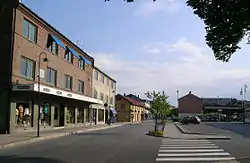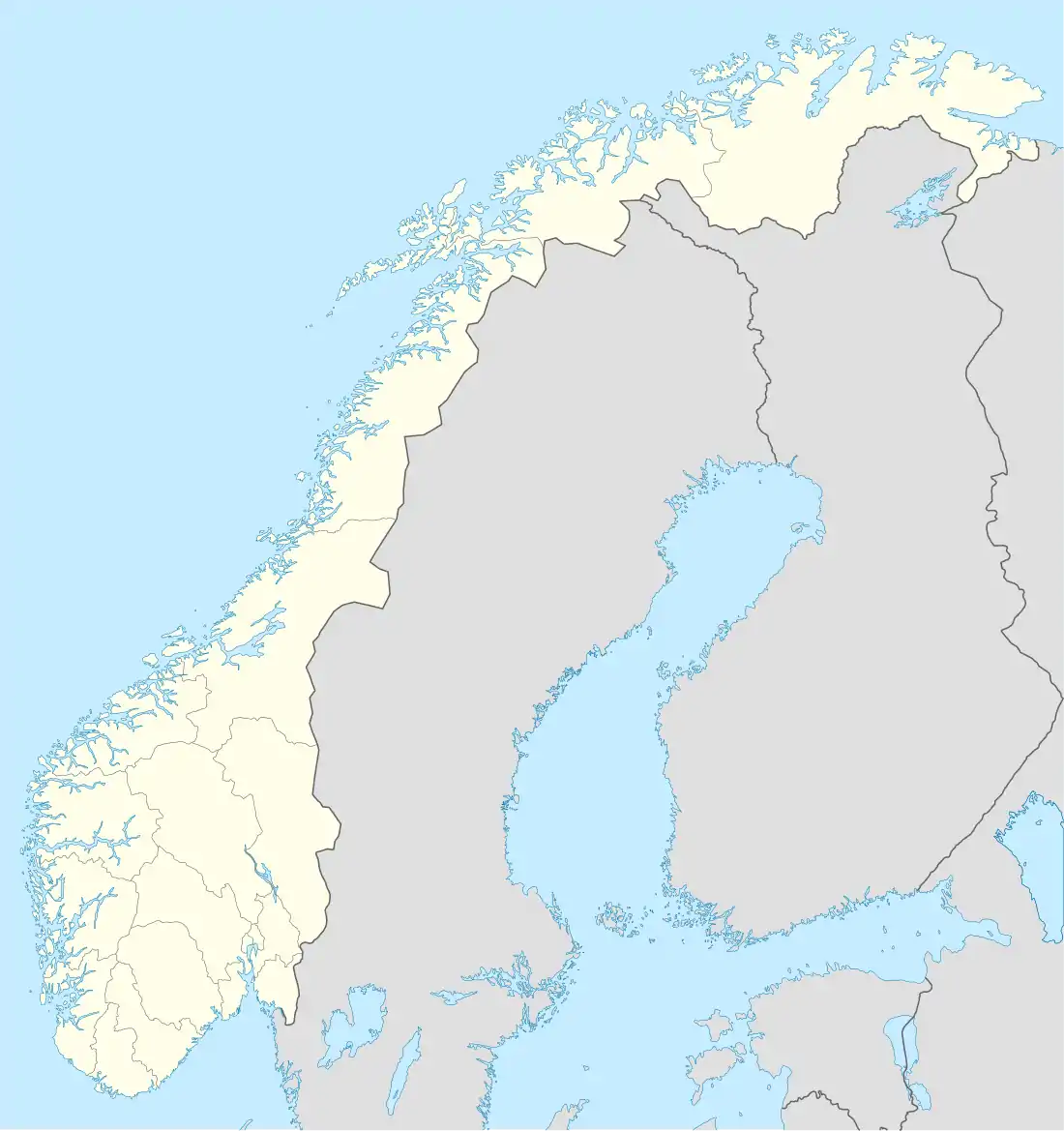Vikersund
Vikersund is a town of 3,232 (in 2020) inhabitants in the municipality capital of Modum, in the county of Buskerud, Norway.
Vikersund | |
|---|---|
 Central Vikersund in early-July 2006. | |
 Vikersund | |
| Coordinates: 59°58′N 9°59′E | |
| Modum | Buskerud, Norway |
| Area | |
| • Total | 2.71 km2 (1.05 sq mi) |
| Population (2020)[1] | 3,232 |

Overview

Vikersund is located 30 kilometers south of Hønefoss and 40 kilometers northwest of Drammen. The village is located at the southwestern arm of Tyrifjorden. Drammenselva enters Tyrifjorden by Vikerfossen. Trunk road Highway 35 passes Vikersund. Vikersund station is a railway station on Randsfjordbanen which was established in 1866, two years before Randsfjordbanen between Drammen and Randsfjord was completed.[2]
Vikersund has a primary school - Vikersund primary school and a middle school - North Modum School. Students at NMU from Vikersund school Sysle school and some also come from Stalsberg school (Geithus). Between Vikersund and Krøderen is Krøderbanen museumsjernbane railway museum. Tyrifjord Hotell, situated by the fjord opposite Vikersund, just 3 minutes by car from Vikersund Ski-Jumping Center with the world's largest ski flying hill. [3][4] [5]
History
Historically, Vikersund been important in the pulp and paper industry. Timber was floated on Tyrifjord past Vikerfossen down the Drammenselva. Modum municipality has many cultural and sports facilities. In Vikersund this includes the Vikersund Ski-Jumping Center with seven ski slopes, golf courses and ski hill. Vikersund is perhaps best known for it ski flying hill, Vikersundbakken. It was first used during the FIS World Cup in February 2011 and regularly hosts World Cup in skiflying. On 18 March 2017 Stefan Kraft set a world record in the ground with 253.5 m, while Dmitri Vassiliev flew to 254 m, but crashed.[6] [7]
Vike kirkeruin
The ruins of Vike Church (Vike kirkeruin) are located east of Vikersund. It was referred to as the parish church in 1456, but is believed to have dated from the 1200s. The church was presumably abandoned around the Protestant Reformation. The walls stood until late 1700s, but later they are used as a quarry. The foundations were uncovered and excavated in 1969-70 under the direction of Luce Hinsch.[8][9]
References
- "Tettsteders befolkning og areal". ssb.no (in Norwegian). Retrieved 2020-10-26.
- Vikersund (Stasjonsdatabasen)
- World’s largest hill in Vikersund (International Ski Federation)
- Velkommen til Tyrifjord Hotell (Tyrifjord Hotell)
- Krøderbanen museumsjernbane (Kunstnerdalen)
- BBC Winter Sports, 15 February 2015
- Historien om Vikersund (Vikersund Ski-Jumping Center)
- Sigrid Marie Christie, Håkon Christie. "Vike kirkeruin". Norges Kirker. Retrieved September 1, 2016.
- Terje Bautz. "Vike kyrkjeruin ved Vikersundet". Terra Buskerud Historieboka. Retrieved December 1, 2017.
Other sources
- Hinsch, Luce (1987) Monuments and Sites: Norway - A Cultural Heritage (Aschehoug AS) ISBN 978-8200184751
| Wikimedia Commons has media related to Vikersund. |